Backyard Farming: Maximizing Small Spaces for Sustainable Homesteads
Think about what it would be like stepping into your backyard and harvesting ripe tomatoes, crisp greens, and fragrant herbs just steps from your kitchen. This isn’t a fantasy—it’s backyard farming, a practice reshaping how we grow food in urban and suburban areas. Whether you have a sprawling lawn or a postage-stamp patio, transforming unused space into a productive homestead is simpler than you think. Let’s explore how to turn your outdoor area into a thriving source of fresh food and sustainability.
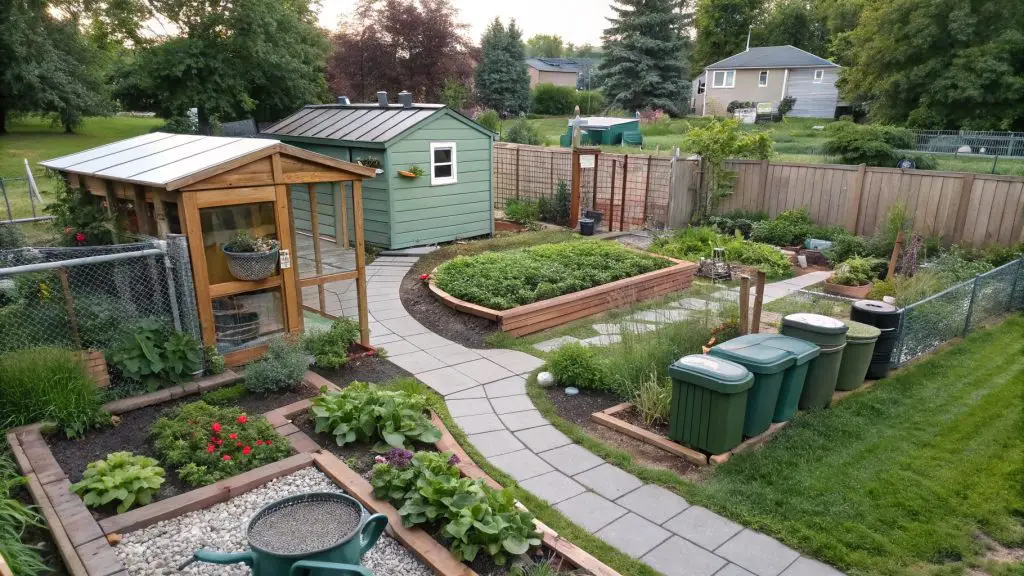
Backyard farming merges the practicality of growing food with the joys of hands-on stewardship. Over 35% of U.S. households now grow some form of edible plants, according to the National Gardening Association. This surge isn’t just about fresh salads—it’s a response to rising food costs, environmental concerns, and a collective yearning for self-reliance.
Even in tight spaces, sustainable homesteads thrive through clever design. A 10’x10’ plot can yield 50 pounds of tomatoes annually, while a single chicken provides 200 eggs per year. The key lies in maximizing vertical space, prioritizing high-yield crops, and integrating systems like composting to reduce waste.
Below, we will look at actionable strategies for:
- Designing layouts that balance beauty and productivity
- Choosing crops and livestock suited to small areas
- Using low-cost DIY projects to enhance functionality
From vertical gardening to compact chicken coops, every idea here prioritizes efficiency without sacrificing aesthetics. Ready to dig in? Let’s uncover how your backyard can become a cornerstone of your sustainable lifestyle.
Pro Tip: Start with one project—like a herb spiral or container garden—to build confidence before expanding.
Backyard Farming Ideas for Small Spaces
🌿 Vertical Gardening: Grow Up, Not Out
Walls and fences become productive spaces with vertical gardening. Install trellises for climbing plants like cucumbers or pole beans. Hang pocket planters for strawberries or salad greens. A 4’x4’ trellis can support 16 tomato plants, yielding over 40 pounds of fruit. For shaded areas, mount fern-friendly frames with moss-lined pockets.
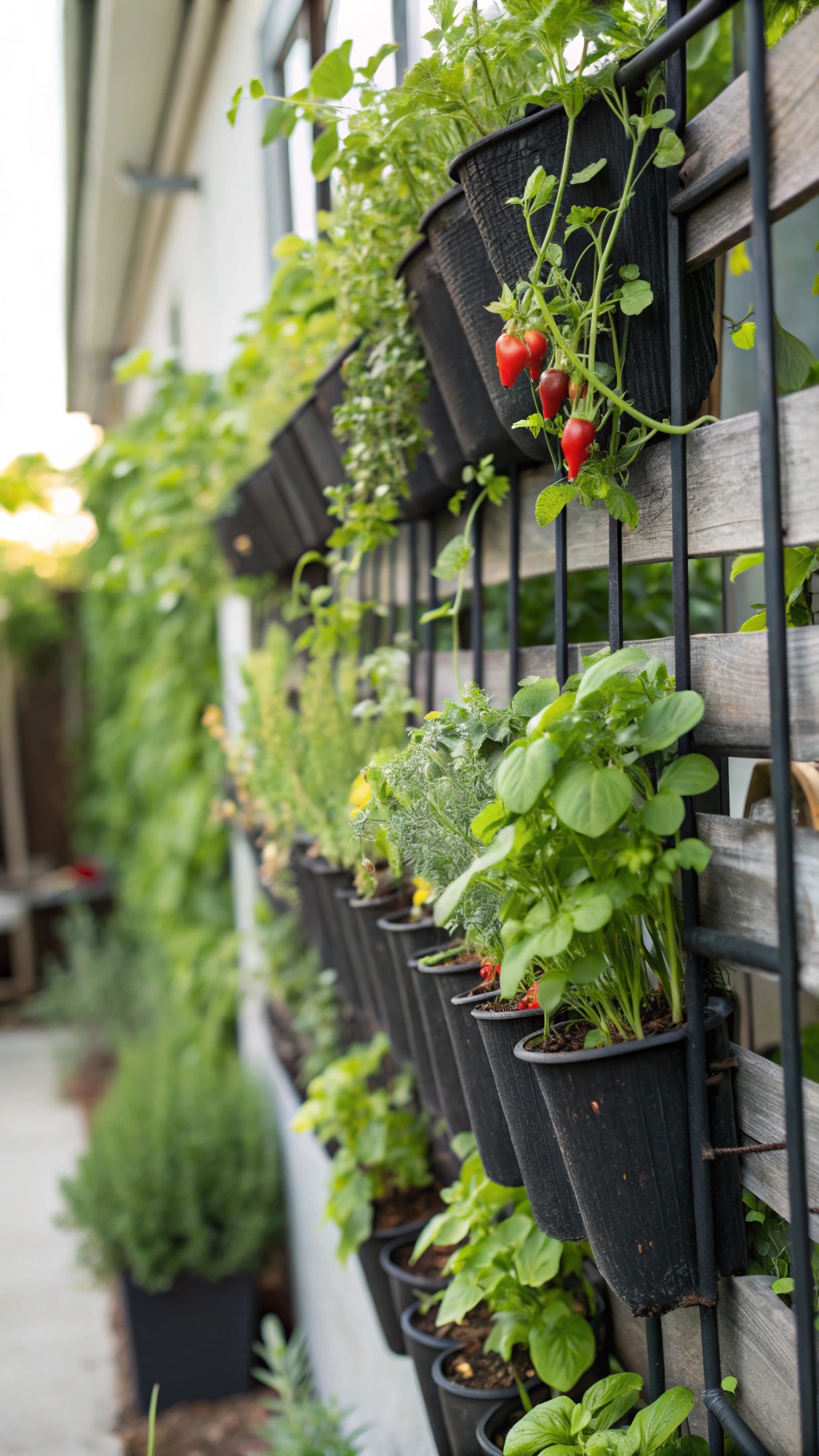
📦 Container Gardening: Flexibility in Small Footprints
Grow peppers in 5-gallon buckets, dwarf citrus trees in half barrels, or herbs in window boxes. Raised beds with wheels let you chase sunlight. Line containers with landscape fabric to prevent soil loss, and drill drainage holes to avoid root rot.

🥗 Microgreens and Sprouts: Instant Gratification
A 10”x10” tray of microgreens delivers nutrient-packed greens in 7-14 days. Try sunflower shoots or radish sprouts on sunny windowsills. Soak seeds overnight, spread them on damp soil, and mist daily. Harvest with scissors when leaves reach 2-3 inches.
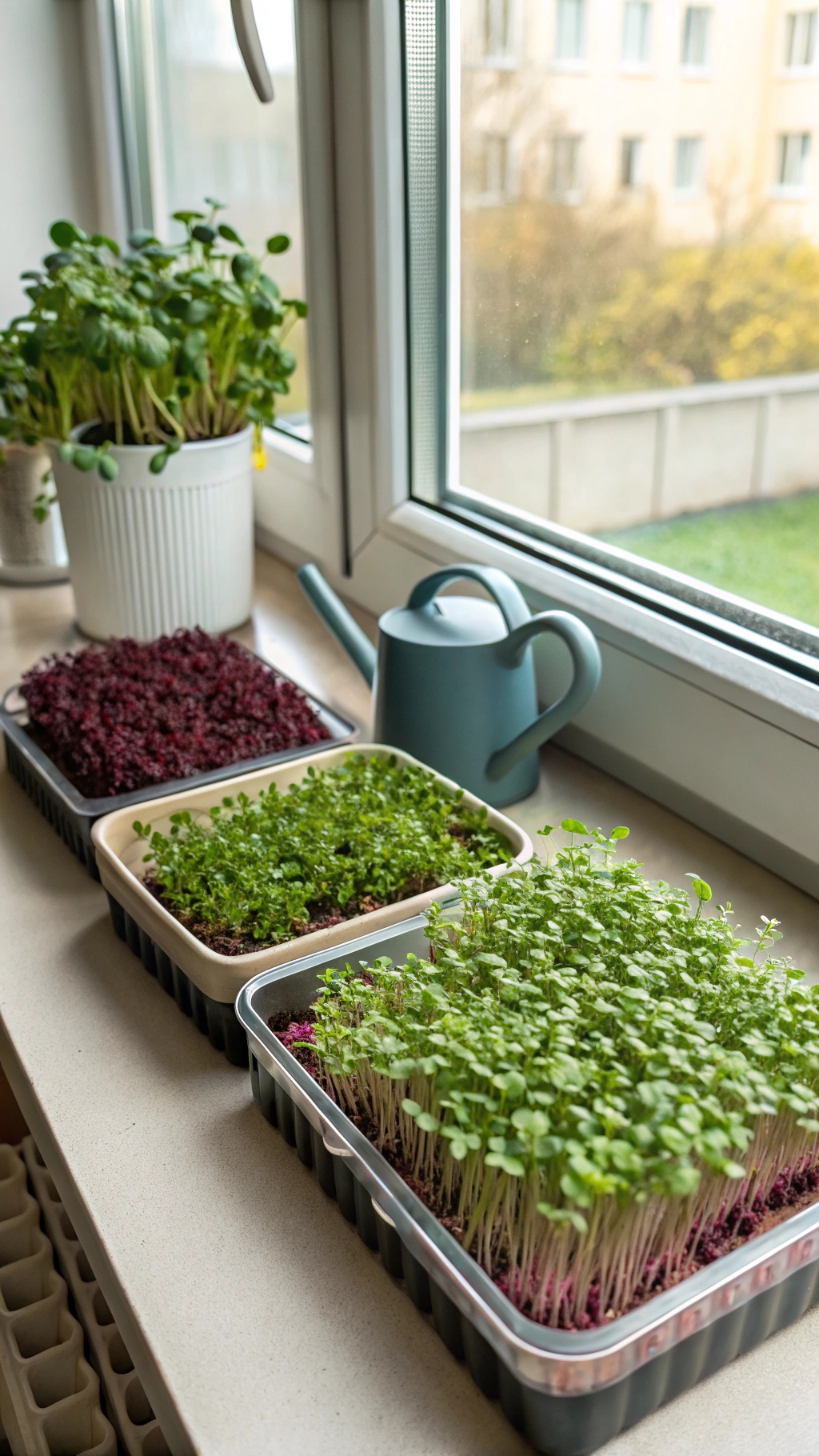
🐔 Compact Livestock: Mini Meat and Egg Machines
Three quail hens lay nearly 300 eggs yearly in a 2’x2’ hutch. Rabbits thrive in 8-square-foot “tractor” pens moved daily across lawns. Check local ordinances—many cities allow 4-6 chickens without permits.
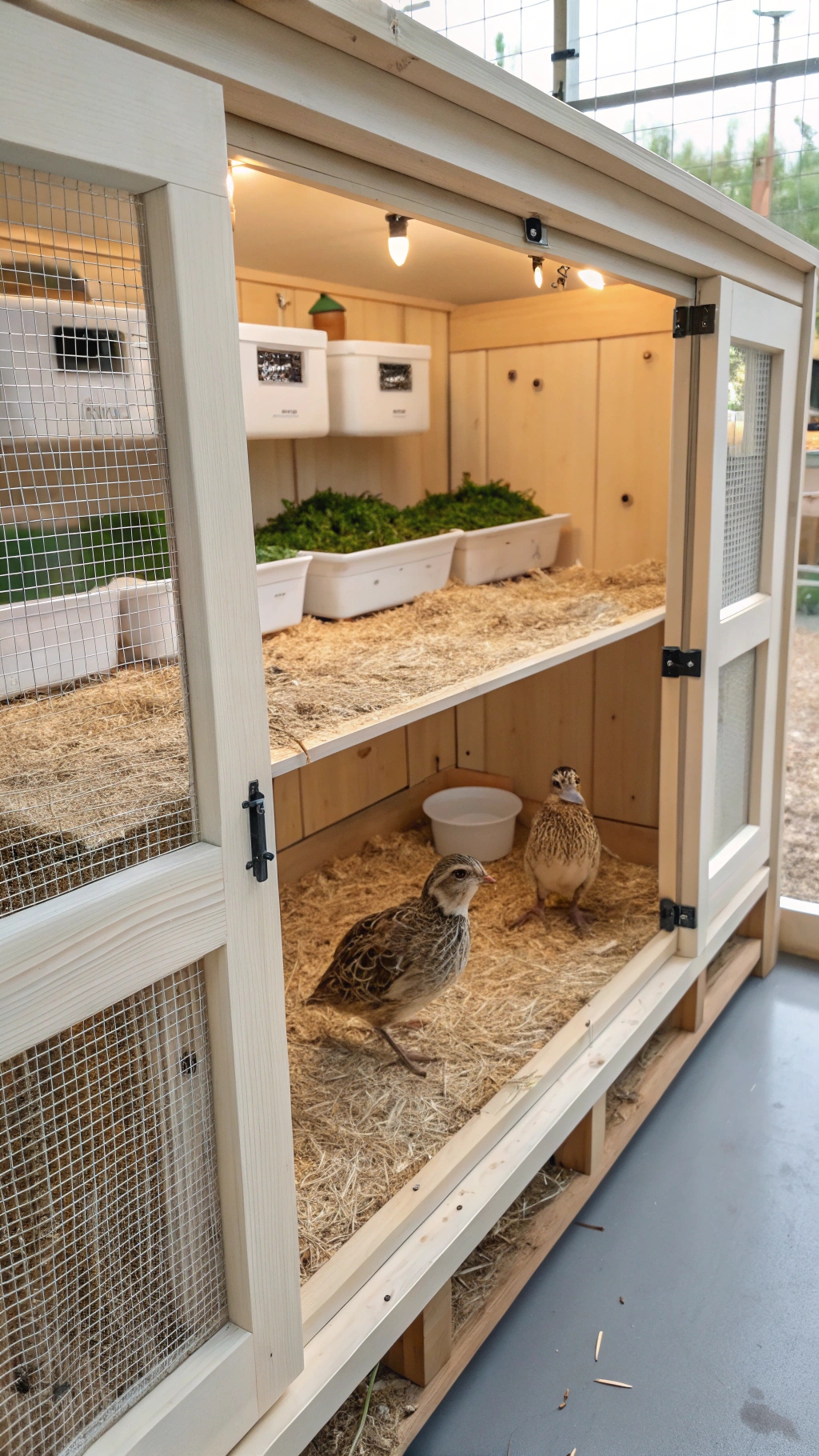
💧 DIY Hydroponics and Aquaponics
Grow more in compact spaces using hydroponics. This form of farming allows you to grow both vertically and horizontally in a soil-less system. Another option is aquaponics where yo can convert an old fish tank into a self-cleaning system: fish waste fertilizes plants, while roots filter water. Leafy greens like kale grow 30% faster in water than soil. Start with a $20 PVC pipe rig and air pump.

🌻 Companion Planting: Nature’s Roommates
Pair basil with tomatoes to repel aphids, or grow radishes beside carrots to break up soil. Marigolds deter nematodes near squash, while nasturtiums lure aphids away from beans.
Backyard Farming Layout and Design
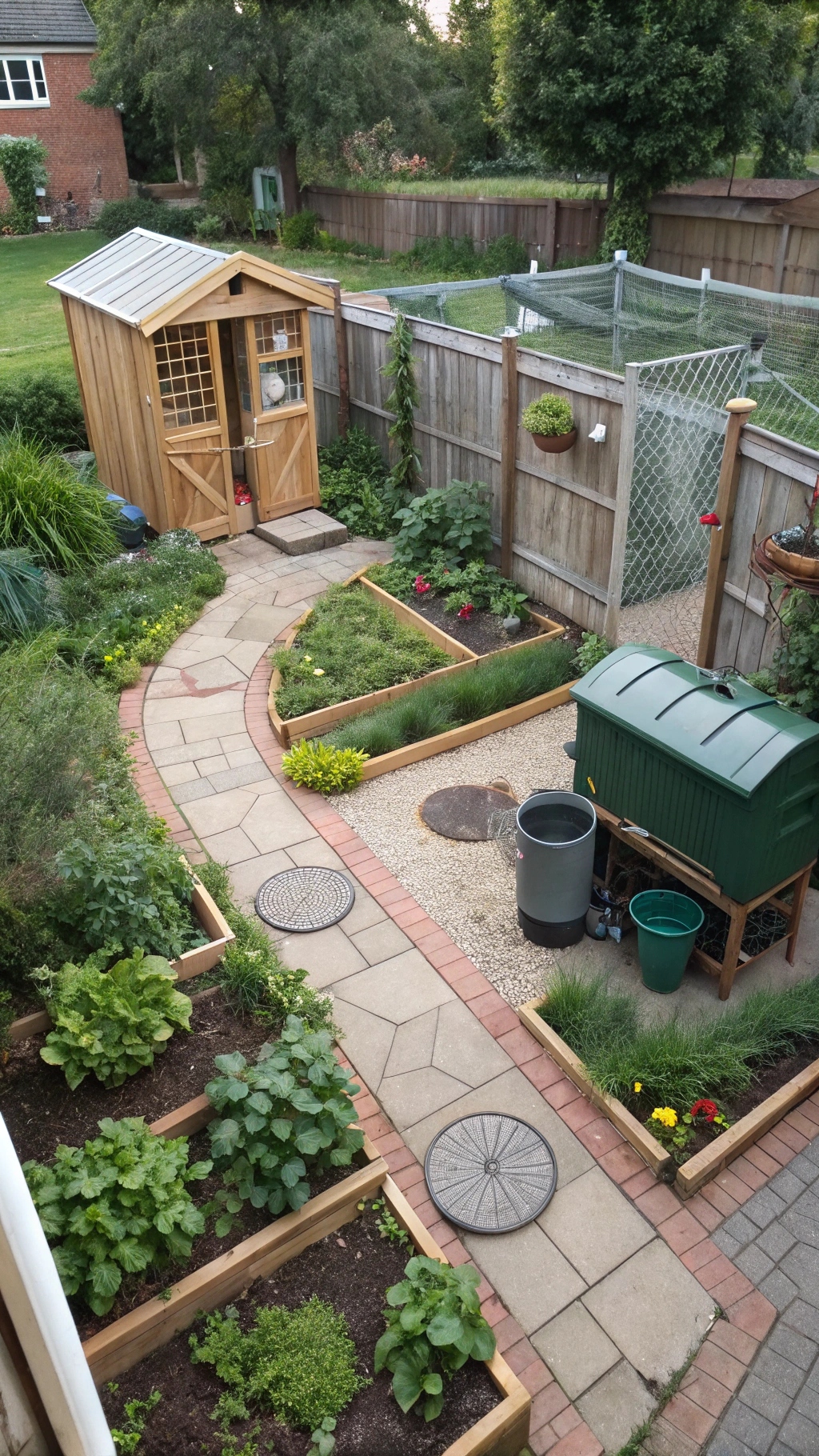
🗺️ Zoning Your Space: A Place for Everything
Divide your yard into three zones:
- Growing Area (sunniest spot, 60% of space)
- Compost/Waste Recycling (shaded corner)
- Livestock/Storage (near water source)
Use graph paper to sketch layouts seasonally—swap summer corn plots for fall garlic beds.
☀️ Sunlight Mapping: Follow the Light
Track shadows every 2 hours using a free app like Sun Seeker. Position tall crops (pole beans) north of short ones (lettuce) to prevent shading. South-facing walls absorb heat for early spring planting.
🚶 Pathways and Accessibility: No More Muddy Shoes
Create 18”-wide paths with wood chips or gravel between beds. For wheelchair access, widen to 36” and use firm materials like decomposed granite. Edge paths with thyme or chamomile for fragrant foot traffic.
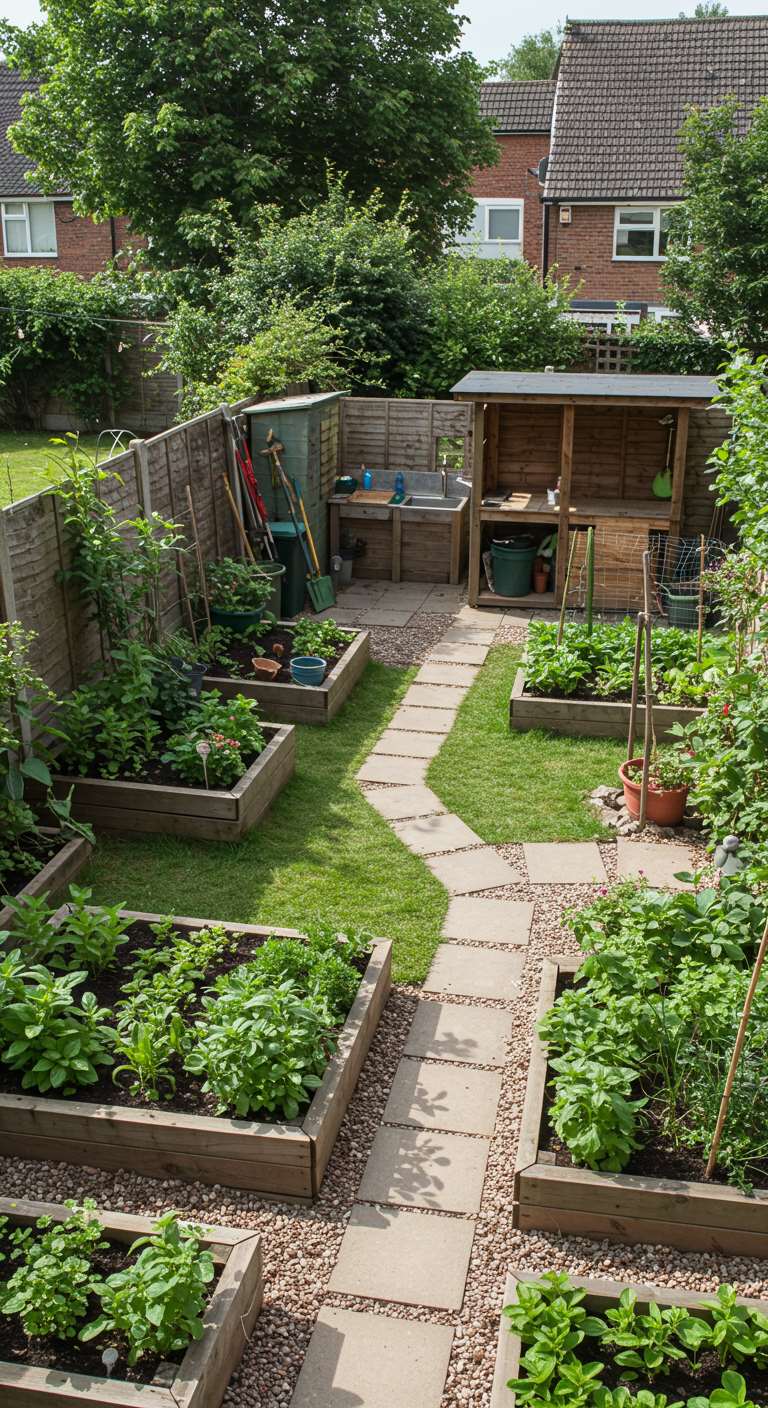
🛏️ Raised Beds and Tiered Gardens
Build 12”-deep cedar beds for deep-rooted crops like carrots. Stack terraced planters on slopes—each tier drains into the one below, conserving water. Paint beds with non-toxic colors to match your home’s exterior.
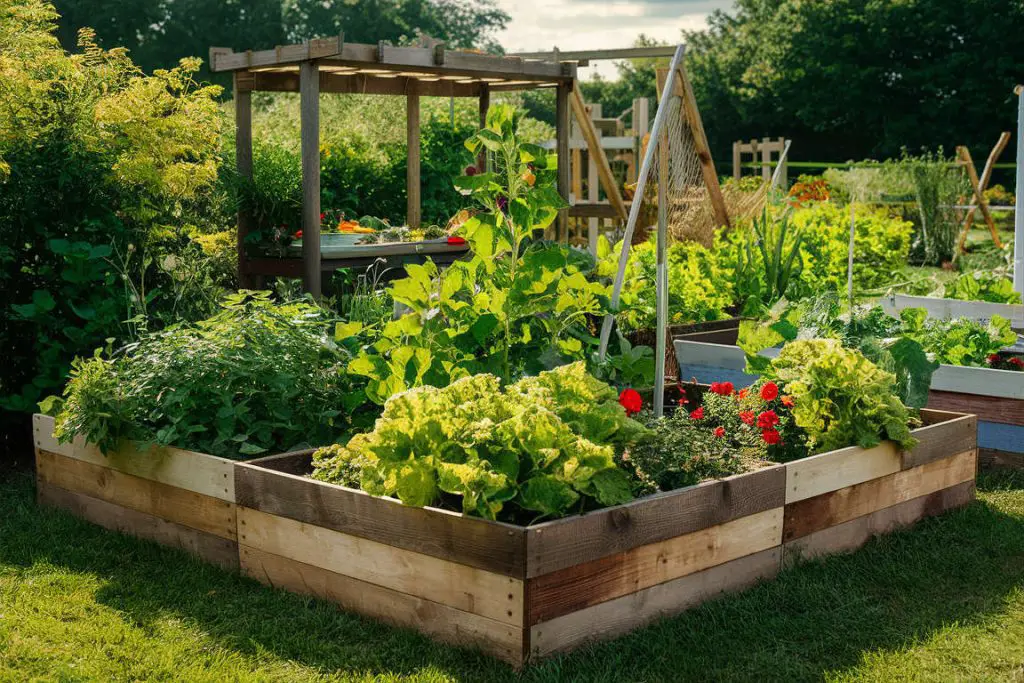
💦 Incorporating Water Features
A 50-gallon rain barrel collects 300 gallons annually from a 10’x10’ roof. Add a small pond with watercress or taro—mosquito fish eat larvae, while aquatic plants filter runoff.
❄️ Seasonal Planning: Year-Round Harvests
Plant cold-hardy kale and Brussels sprouts in August for winter harvests. Use hoop houses with row covers to extend seasons by 6-8 weeks. Rotate nitrogen-fixing peas with heavy feeders like corn to replenish soil.
🌿 Tip: Label plants with weatherproof tags noting planting dates and varieties for easy tracking.
Backyard Farming Aesthetic
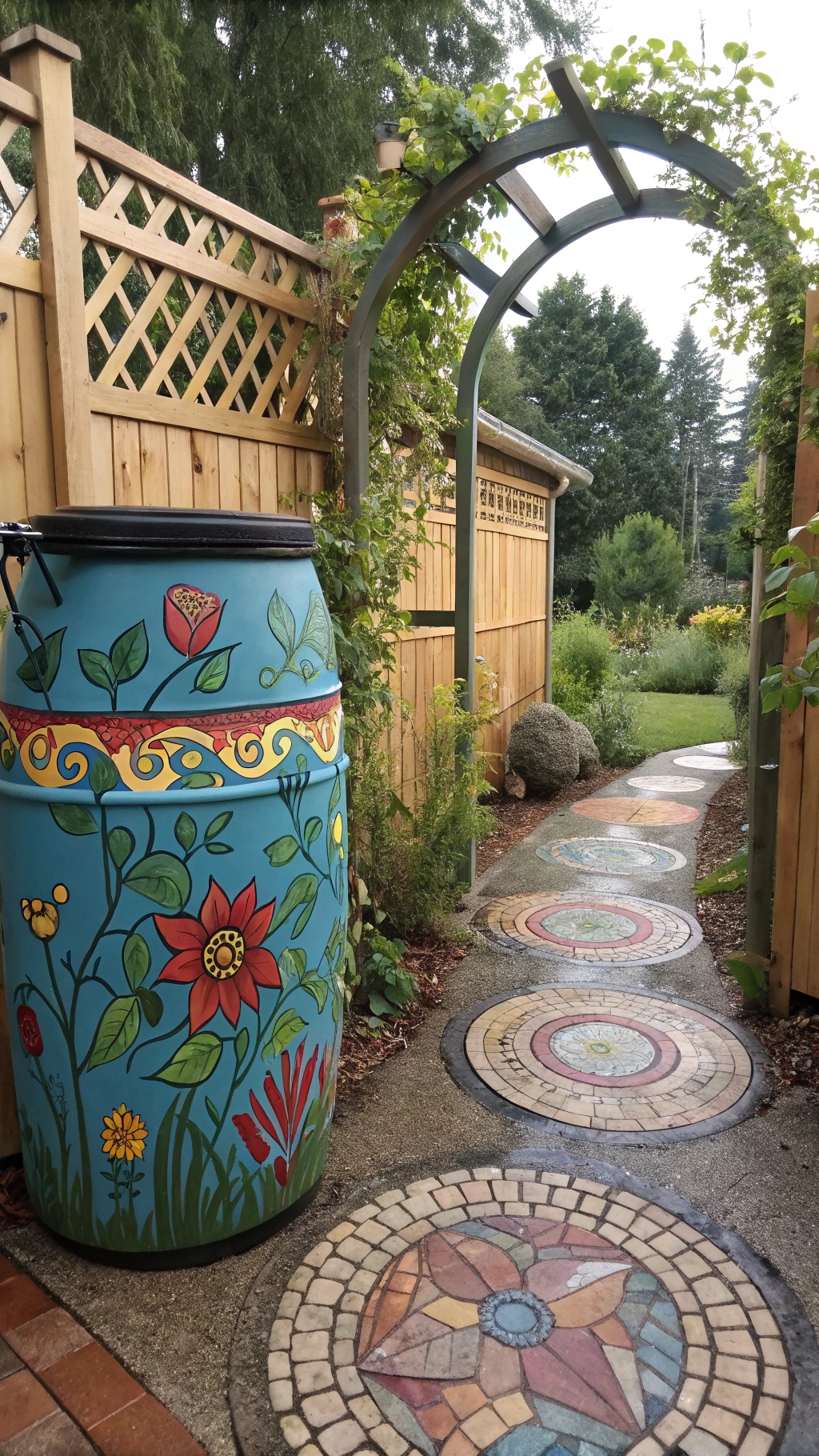
🌼 Blending Function and Beauty: Pretty Meets Practical
Turn trellises into art by shaping them into arches or spirals. Paint functional items like rain barrels with floral designs using outdoor-safe acrylics. Add mosaic stepping stones between beds using broken tile scraps. A decorative chicken coop with scalloped roofing boosts curb appeal while housing layers.
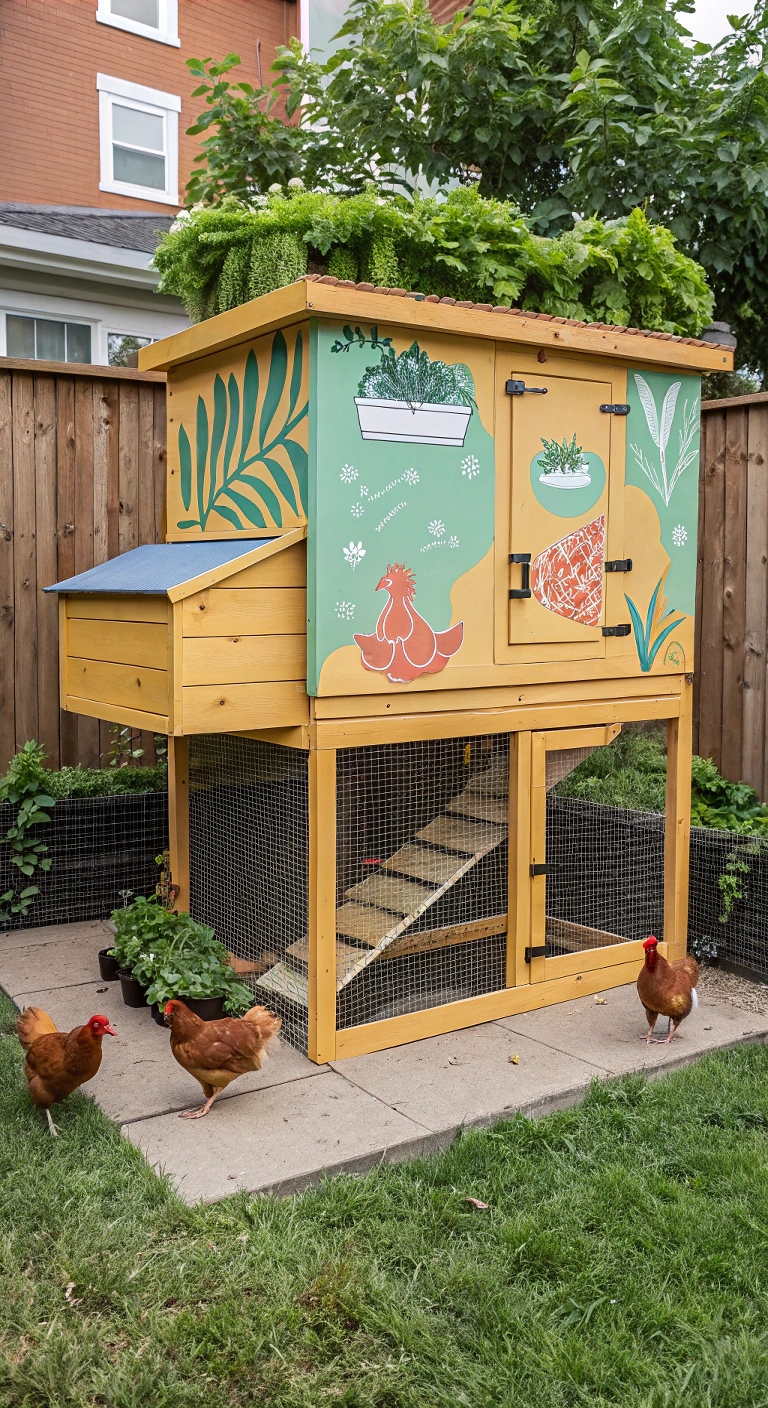
🎨 Color Coordination: Nature’s Palette
Pair purple kale with golden marigolds, or red lettuce with blue borage flowers. Use variegated mint as living mulch—its green-and-white leaves brighten shady spots while deterring pests. For winter interest, plant crimson-stemmed chard beside evergreen rosemary.
🪵 Natural Materials: Rustic Charm
Edge beds with fallen branches or river rocks. Build a pergola from reclaimed barn wood for grapes or kiui vines. Bury clay pots halfway as self-watering planters—their porous walls regulate soil moisture while adding earthy texture.
💡 Lighting: Nighttime Magic
String solar-powered lanterns along fence tops to illuminate paths. Bury low-voltage path lights to highlight rosemary borders. Hang mason jar candles in fruit trees for festive summer gatherings, or install LED strip lights under raised bed edges.
🦋 Wildlife-Friendly Features: Invite Allies
Install a 6”x6” bee hotel made of drilled logs near flowering herbs. Plant milkweed for monarch butterflies, and leave autumn leaves undisturbed for ladybug larvae. A shallow birdbath with stones prevents drownings while attracting insect-eating songbirds.
DIY Backyard Farming Ideas for Small Spaces
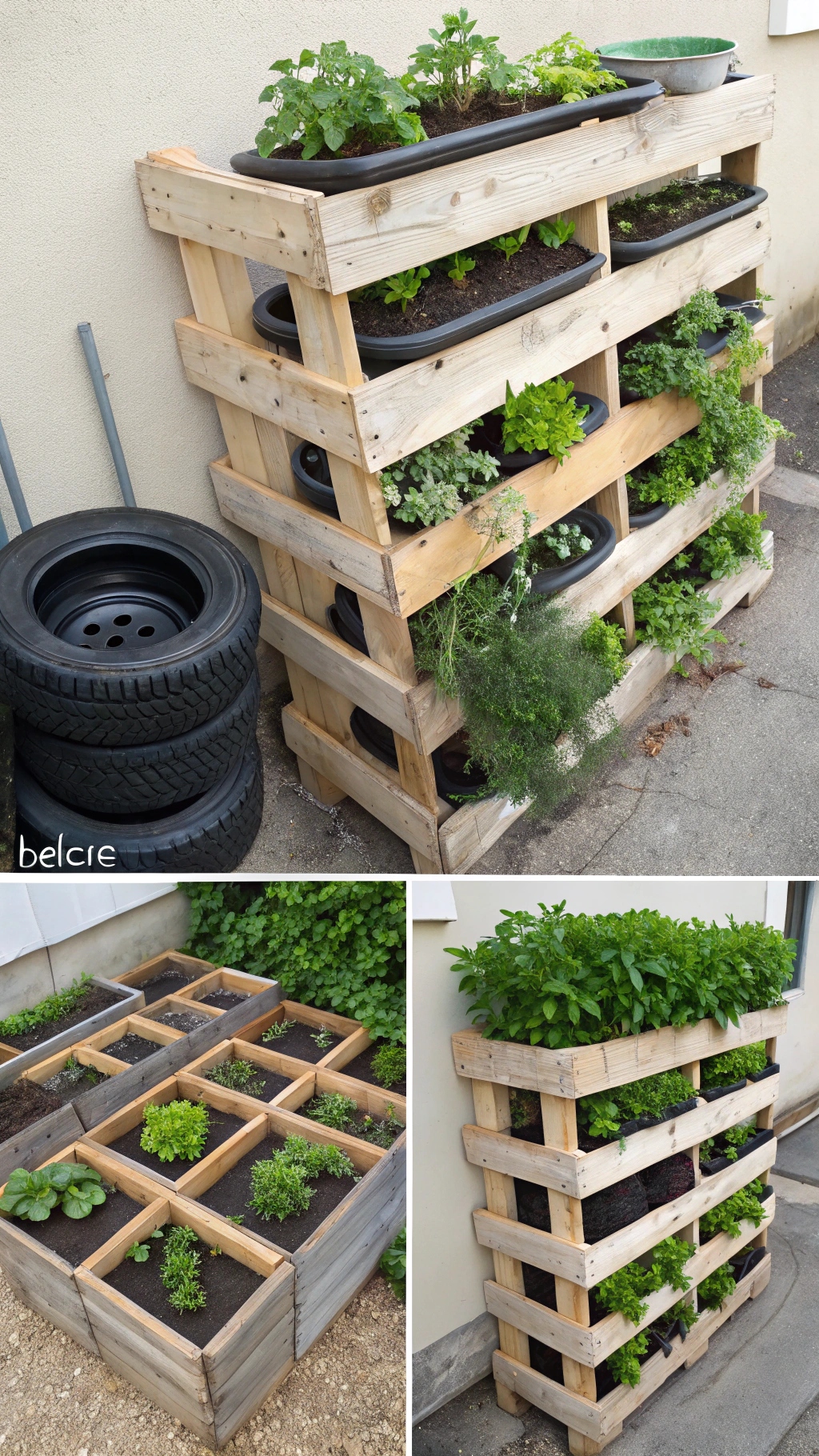
🛠️ Pallet Gardens: Instant Vertical Space
Sand a discarded shipping pallet, staple landscape fabric to the back, and fill with soil. Plant strawberries in the slats or herbs in the gaps. Lean against a wall or fence for instant greenery—no construction skills required.
🚗 Tire Planters: Circular Solutions
Paint old tires with non-toxic paint, stack 2-3 high, and fill with soil. Their dark rubber absorbs heat, perfect for peppers and eggplants. Drill holes in the sides to tuck trailing plants like nasturtiums for a “spilling flowers” effect.
♻️ DIY Compost Bins: Waste to Wealth
Nail four pallets into a square box for open-air composting. Layer kitchen scraps with leaves and turn weekly. In 3 months, harvest nutrient-rich compost for your beds. Add red wiggler worms to accelerate decomposition in enclosed systems.
🌧️ Homemade Rain Barrels: Catch Free Water
Create your own rainwater collection system by converting a food-grade 55-gallon drum by attaching a spigot near the base. Screen the top opening to block debris. Position under downspouts to collect thousands of gallons yearly—use soaker hoses for gravity-fed irrigation.
🪑 Upcycled Furniture: Quirky Planters
Remove drawers from a broken dresser, line with burlap, and fill with soil. Plant lettuce in shallow drawers, deeper ones for carrots. Prop open lids at angles to create mini greenhouses for tender seedlings.
🌱 Mini Greenhouses: Climate Control
Cut the bottom off a 2-liter bottle, place over seedlings as a cloche. For larger plants, hinge old windows into an A-frame over a raised bed. Open vents on warm days using stick props to prevent overheating.
🌿 Pro Tip: Test DIY projects with inexpensive materials first—upgrade components once you’ve perfected your design.
Backyard Farming for Homesteads
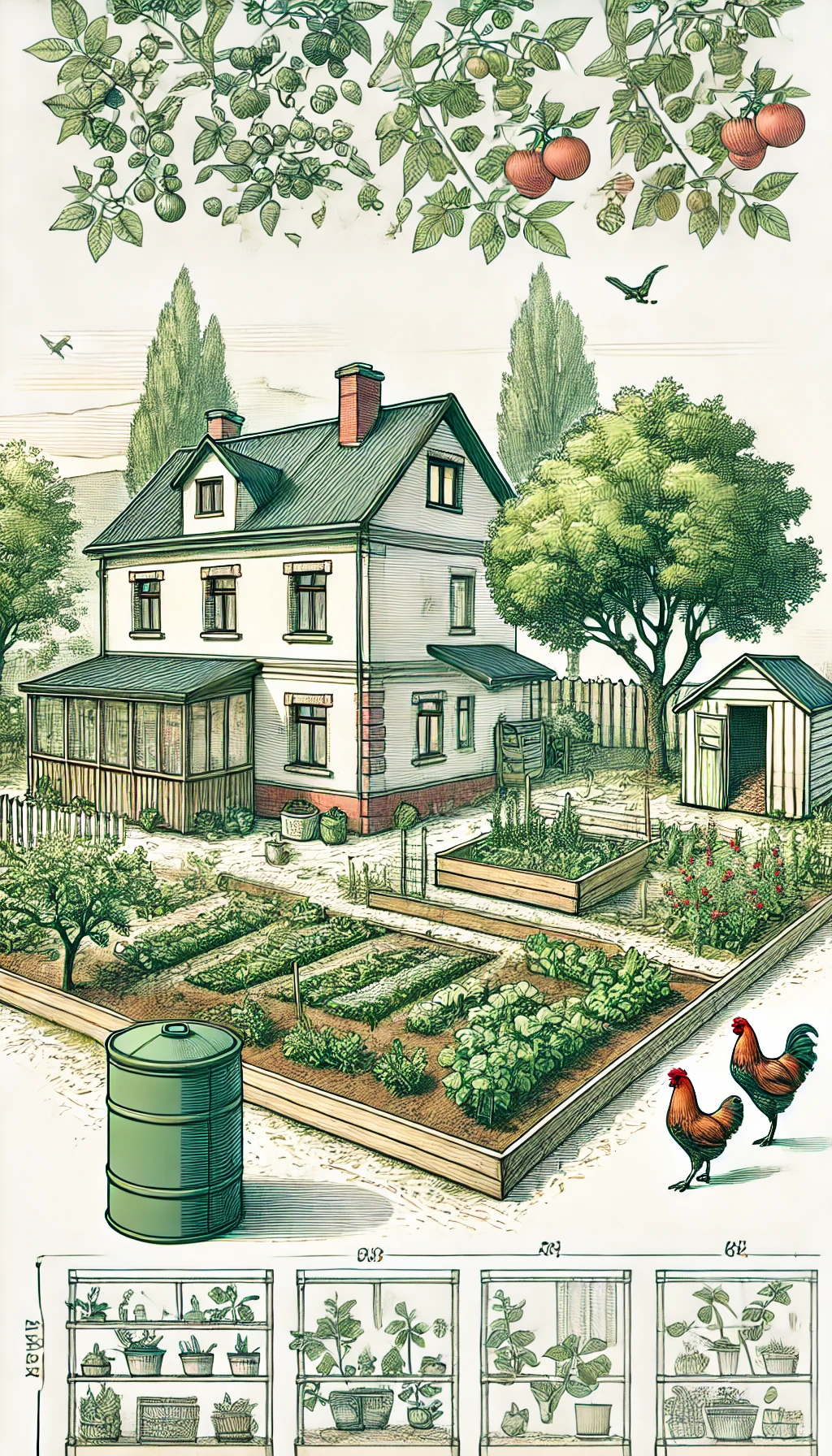
🌳 Expanding Beyond Vegetables: Perennial Bounty
Dwarf fruit trees like columnar apples or peaches thrive in 15-gallon pots, yielding 20-30 pounds annually. Plant thornless blackberries along fences—one bush produces 10 quarts over summer. Nut trees like hazelnuts fit small yards, bearing nuts in 3-5 years. Interplant guilds: grow garlic around peach trees to deter borers, or strawberries beneath blueberry bushes as living mulch.
🦆 Livestock Integration: Beyond Chickens
Two ducks lay 300 eggs yearly while eating slugs from garden beds. Pygmy goats clear brush in 200-square-foot pens—their manure enriches compost. Keep honeybees in top-bar hives (30”x18”) for pollination and 50+ pounds of annual honey. Always provide clean water sources within 10 feet of enclosures.
🥫 Food Preservation: Harvest All Year
Build a 4’x4’ root cellar underground with cinderblock walls to store carrots and potatoes at 40°F. Dry herbs on window screens hung from rafters. Ferment sauerkraut in crocks beneath kitchen counters. Freeze blanched beans in reusable silicone bags for winter stir-fries.
🔋 Energy Efficiency: Off-Grid Solutions
Install a 200-watt solar panel to power chicken coop heaters or irrigation timers. Use a rocket mass heater from cob and recycled bricks to heat small greenhouses. Capture methane from compost piles via buried PVC pipes to fuel outdoor stoves.
🤝 Community Involvement: Grow Together
Host monthly seed swaps in your driveway—trade 10 tomato seedlings for a neighbor’s extra zucchini starts. Donate surplus eggs to food banks (check local health regulations first). Teach free workshops on canning basics or hive inspections to build skills locally.
Backyard Farming Layout Design Tips
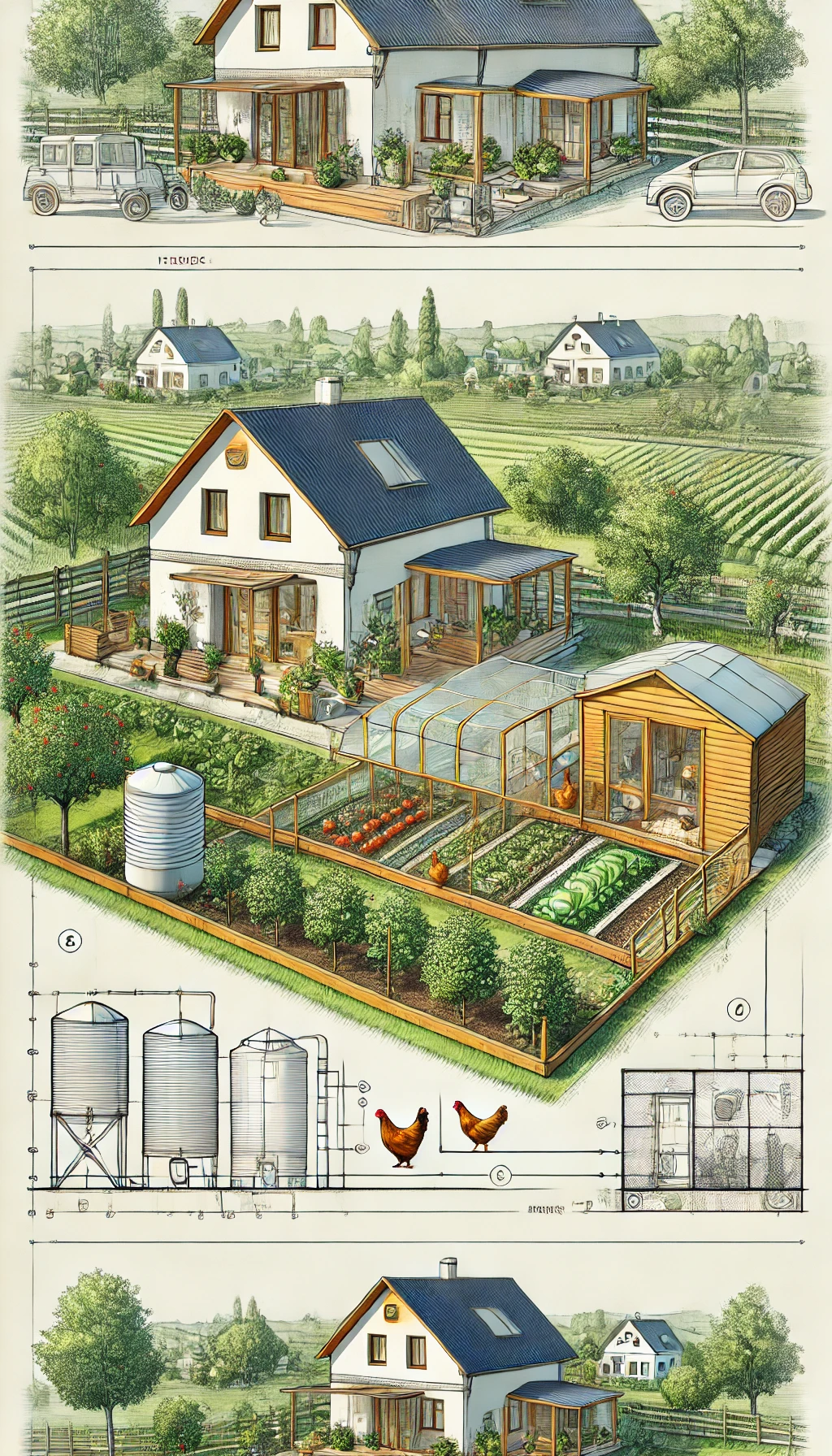
📏 Start Small: Master the Basics First
Convert a 4’x6’ area into a starter garden with 3 crops: fast-growing radishes (25 days), bush beans (50 days), and kale (60 days). Add one element yearly—a compost bin in spring, a chicken coop by fall. Document progress in a journal with monthly photos.
🌽 Prioritize High-Yield Crops
Focus on plants producing over 1 pound per square foot:
- Cherry tomatoes (8-12 lbs/plant)
- Zucchini (6-10 lbs/plant)
- Pole beans (1 lb/10-ft row weekly)
Use square foot gardening grids to maximize density without overcrowding.
☂️ Incorporate Shade Structures
Stretch 40% shade cloth over hoops to cool lettuce in summer heat. Train grapes over arbors—their leaves block midday sun while yielding fruit. Plant tall sunflowers north of tender crops like spinach to create natural shade patterns.
🔮 Plan for Expansion: Future-Proof Designs
Leave 3-foot gaps between raised beds for eventual greenhouse framing. Install conduit pipes along bed edges now—thread drip lines through them later. Choose modular coops with removable panels for easy size adjustments as flocks grow.
📱 Use Technology: Smart Farming
Monitor soil moisture with $15 Bluetooth sensors. Try apps like Garden Planner to map crop rotations visually. Set up automated texts from weather stations alerting you to frost risks. Share yields on community boards to track collective food production.
🌿 Pro Tip: Test soil pH and nutrient levels every spring—adjust amendments based on last year’s crop performance.
Final Thoughts
🌍 Your Backyard, Your Legacy
Every seed planted and egg collected strengthens your connection to the land while reducing reliance on fragile food systems. Whether you’ve built a pallet herb wall or raised a flock of quail, these efforts ripple outward—improving soil health, supporting pollinators, and inspiring neighbors.
Sustainability starts small: A single raised bed or compost bin proves that impactful change fits any space. Track progress through simple metrics—calculate how many grocery trips you’ve replaced or estimate your annual carbon offset from homegrown meals.
🧑🌾 Next Steps to Homesteading
- Audit your space: Measure sunlight hours and soil quality in different zones.
- Choose three starter projects (e.g., microgreens, rain barrel, compost).
- Connect locally: Join a seed library or barter group to exchange resources.
Challenges like pests or weather become learning opportunities, not failures. If kale bolts in summer heat, pivot to heat-loving Malabar spinach. When chickens stop laying, use their downtime to deep-clean coops.
🌱 Pro Tip: Keep a garden journal—note what thrived, what struggled, and ideas for next year. Even failed experiments provide data for future success.
Ready to begin? Your perfect tomato or golden-yolked egg awaits, just beyond the back door.
